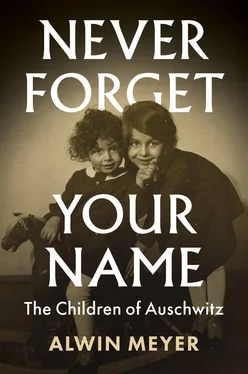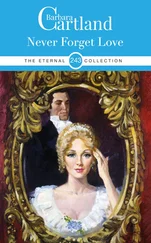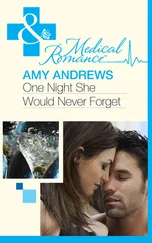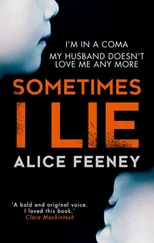Even as a small boy, Heinz had a great passion – namely, fishing. He would get up early and prepare the bait, a well-kneaded mixture of bread and cheese, and then sit with his fishing rod for hours, above all catching mullet, of which there are around eighty varieties worldwide. And with his sister Erika he caught crabs, which their mother cooked. ‘A delicious special treat.’
Heinz still recalls the ‘chamalis’ or porters: 47‘They were almost all Jews.’ They carried the goods unloaded in the port of Thessaloniki to the city and the nearby mountain villages in horse-drawn carts, or pulled them in elongated handcarts on the narrow mountain roads.
The chamalis were very strong and could carry over 100 kg on their backs up to the third or fourth floor of the houses. And when they came down from the mountains and ran down the streets at great speed with the handcarts, they made a lot of noise and shouted: ‘Watch out! Get out the way!’ The carts had a bell that rang constantly. And when they came to a crossroads, everyone stopped. They always had priority. The chamalis were very well known and a typical feature of Saloniki at the time.
The hardworking Jewish dockers in the port of the picturesque city on the Thermaic Gulf were also famous. The Viennese newspaper Die Stimme – Jüdische Zeitung reported on 20 November 1934: ‘Aba Houchi, member of the board of the Histadrut ha-Ovdim [labour federation] of Haifa, arrived in Saloniki to choose 100 to 150 Jewish dockers for immediate resettlement in Palestine. These dockers will work mostly in the port of Haifa but also in Jaffa. There are already 300 Jewish dockers’ families from Saloniki living in Palestine.’ 48
Heinz Kounio: ‘If you get into a taxi in Haifa today and ask to hear a Greek song, the driver will put one on for you. Many of these taxi drivers are descendants of those first dockers from Thessaloniki.’
In spite of the recurrent expulsion, persecution and pogroms, 49there was Jewish life everywhere in Europe. The creativity and work of Jewish researchers, industrialists, painters, doctors, musicians, politicians and writers had a far-reaching impact in many countries. In large parts of Europe, they were and are part of the history not only of the Jewish people but also, for example, of the people of Austria, Belarus, Belgium, Bulgaria, the Czech Republic, Denmark, Estonia, France, Germany, Greece, Hungary, Italy, Latvia, Lithuania, Luxembourg, the Netherlands, Norway, Poland, Portugal, Russia, Slovakia, Switzerland and Ukraine.
Before the Nazi era, there were few cities in Europe, large or small, which did not have Jewish children, women and men living in them, often for several hundred years, in some cities and regions for over 1,000 or 2,000 years. Well over 30,000 localities in Europe had Jewish inhabitants. 50
Dáša Friedová spent the first years of her life with her parents, Otto and Kát’a Fried, and her sister Sylva, three years older than her, in the small Czech village of Odolice. It was around 40 kilometres north-east of the German border. The parents owned a large farm with 360 hectares of land. The village had around 150 inhabitants, Czechs and Germans. The Frieds were the only Jews.
When the neighbours slaughtered a pig, they gave some to the Frieds. ‘We did the same. We gave them grain or whatever our neighbours and friends needed. This was the way we were, and the Germans living in the village were not excluded.’ The Frieds did not keep kosher. ‘We cooked and ate just about everything.’ They regarded themselves as Czech but still celebrated Pesach, recalling the exodus from Egypt, and Purim, commemorating the rescue of the Persian Jews. These were large family gatherings. But they also celebrated Easter and Christmas with their Christian friends and employees.
Dáša and Sylva’s closest friends were the daughters of her father’s employees who worked on the farm. ‘We played together every day and were good friends.’ Dáša and Sylva went to the village school like the other children. The school consisted of two rooms, one for the smaller children up to Year 3, and the other for the older girls and boys. ‘We were the only Jewish children in the school and village, but it was not an issue. We never felt any antisemitism, not even from the German children.’
The Fried family travelled regularly to Most, a short drive from Odolice. The town was a trading hub and centre of the large brown-coal field in north-western Bohemia. In 1930, Most had a population of around 28,000, including 662 Jews. The history of the Jewish community dated back to the fourteenth century, and since 1872–3 it had had its own synagogue, which was destroyed by the Nazis in 1938. 51The old Jewish cemetery survives to this day as the last relic of the Jewish citizens of Most.
In the 1930s, the Frieds travelled to Most to do their shopping, visit the theatre or spend their Sundays in the park of the nearby spa resort Bílina. Jews had been documented in Bílina since the fifteenth century. The Jewish cemetery was laid out in 1891 and a synagogue was dedicated four years later. In the early 1930s, the rabbi of Bílina, A. H. Teller, noted: ‘[The Jewish community] has 120 souls and around 50 taxpayers. The community has a temple and cemetery in good condition. May the community be allowed to continue in future to work for the benefit of Judaism through the peaceful collaboration with all members.’ 52
The main attraction for the Fried family was the public mineral spring in the park. ‘My father played cards and my mother chatted with other women. Sylva and I played with our governesses or with other children whom we met by chance in the park.’
On the major holidays, the family went to the Moorish-style Jubilee Synagogue, 53built in 1905–6, Prague’s largest Jewish prayer house on Jeruzalémská, among other things to meet up with their relatives. The parents also took their children to the Jewish cemetery in Prague, where they placed small stones on the gravestones in memory of the deceased. ‘Visitors to a cemetery always left a stone. It’s a Jewish tradition all over the world.’ The family travelled once a week to the capital, 80 kilometres away. ‘We had lots of relatives in Prague – aunts, uncles and cousins. We were all very close and enjoyed each other’s company. It was always a great family occasion.’
‘I have only good memories of the first nine years of my childhood. It was a nice, happy time.’
Gábor Hirsch The ‘King of Trains’ – more precisely, one of the routes of the Orient Express – passed from the 1920s through the town of Békéscsaba in south-eastern Hungary. 54Even as a boy, Gábor Hirsch was fascinated by it, imagining the adventure, glamour and unknown worlds associated with this special train.
Gábor’s father János owned an electrical supply and radio shop in Békéscsaba, which he had opened around 1925 with his uncle Ferenc. The uncle emigrated a few years later to Egypt, after which János ran the business on his own. His wife Ella was one of the sales assistants. In its heyday, the business had between ten and fifteen trainees. 55
Békéscsaba had a population of around 50,000 at the time, of whom some 2,500, or perhaps 3,000, were Jews, like the Hirsch family. 56The Jewish community of Békéscsaba dates back to the end of the eighteenth century. The oldest gravestone in the Jewish cemetery of the Neolog (reform) community is of Jakob Singer, who died in 1821. A monument in the town park commemorates the victims of a cholera epidemic of 1825, including eleven Jews. According to Gábor Hirsch’s research, there were two independent religious Jewish communities in Békéscsaba after 1883: the orthodox, and the liberal – or Neolog – community, which the Hirsch family belonged to. The first synagogue was built in 1850, and a second one for the orthodox community was built in 1894. 57The two synagogues faced one another on either side of Luther Street.
Читать дальше












